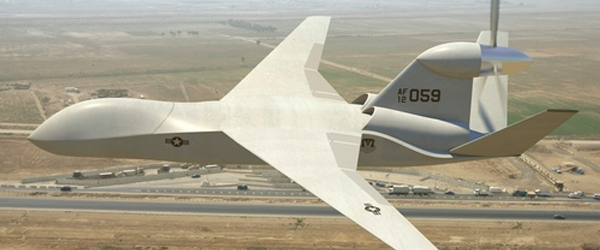The U.S. Defense Department’s 30-year Aircraft Procurement Plan for the Navy and Air Force unleashed a few surprises, such as the possibility of replacing the Air Force’s E-3 Airborne Warning and Control System (AWACS) and RC-135 Rivet Joint aircraft with unmanned systems.
Dated March 2011, the 30-year plan outlines how the Pentagon plans to spend $259 billion across that period, highlighted by a continued increase in unmanned aircraft system (UAS) spending; a sixth-generation, and potentially unmanned, fighter for the Navy; and a long-range nuclear bomber that will cost less than $550 million per copy.
In an April 9 letter that accompanied the plan, Defense Secretary Robert Gates cautioned against viewing it as a blueprint. “[We] need to focus on the flexibility and adaptability of our force in every year between now and the end of the reporting period,” Gates wrote to Rep. Howard “Buck” McKeon, R-Calif., House Armed Services Committee chairman.
Air Force officials expect the E-3 and RC-135 to retire before 2041. The Air Force flies 17 Rivet Joints and 33 AWACS, which provide airborne command and control, surveillance, and target detection for ground and headquarters units. Service officials expect UAS technology to advance enough to allow these manned platforms to be replaced by drones.
Richard Aboulafia, an analyst with the Teal Group, Fairfax, Va., called the unmanned approach for command-and-control aircraft intriguing, but noted it strayed from the traditional airborne battle management concept. “You’ve got these large, rapidly deployable teams of people in a plane with sensors and a lot of consoles, so they can do a battle management function as well as a sense-and-detect function,” Aboulafia said.
In addition to a standard flight crew, the E-3 AWACS, RC-135 Rivet Joint and E-8C Joint Surveillance Target Attack Radar System carry 13 to 27 specialists. “With UAVs, you’re basically saying, ‘OK, it’s better to distribute these capabilities, assuming unlimited amounts of data transmission,’” Aboulafia said. “There’s probably some accuracy to that, it’s just that the other problem is that you’ve got extremely high-value sensors, so can you trust them to unmanned systems?” He said such an aircraft would be extremely expensive; optionally manned systems might be another approach.
Air Force and Navy fleets can expect a boost over the next decade. The DoD plans to nearly double the number of UAVs from 340 in 2012 to 650 by 2021. In 2018, the Marine Corps plans to introduce a Group 4 UAS, which will be a surveillance and strike aircraft to support the Marine Air Ground Task Forces. The plan did not mention the Air Force’s next-gen MQ-X UAV.
Navy Fighter
The plan lists a sixth-generation fighter, dubbed the Next Generation Air Dominance (NGAD) aircraft, saying it will eventually replace the F-35 Joint Strike Fighter. The Navy has previously shown interest in a sixth-generation fighter dubbed the FA-XX. In an April interview, Navy Undersecretary Robert Work said the service plans to start work on such a fighter in 2020. “The rise in Department of the Navy investment after FY 2019 reflects increased research and development for NGAD,” the plan says.
The Navy expects the development of the Unmanned Carrier-Launched Airborne Surveillance and Strike system to teach the service about building the first unmanned fighter. “So the debate within the department is, could that be a mix of manned and unmanned? Could it be an optionally manned platform? Do we believe that 2030 – when we need to start replacing the earliest [FA-18] Es and Fs – would we be ready to go to an unmanned system at that point?” Work said last month.
There is no mention of Air Force plans to build a sixth-generation fighter, although the service issued a request for information on a next-generation “tactical aircraft” with “an initial operational capability (IOC) of approximately 2030.” DoD officials still intend to build a long-range, nuclear-capable bomber that can fly manned or unmanned missions. Air Force leaders want to buy 80 to 100 planes. Meanwhile, the Air Force plans to upgrade the 20 B-2 bombers left in the fleet and scuttle six B-1s in order to fund upgrades for the remaining B-1 fleet.
Air Force leaders don’t expect to have to replace the C-130J any time soon, lauding it as “an extremely versatile aircraft” hauling people and equipment and troops throughout Iraq and Afghanistan for the past decade. However, the Air Force plans to eventually replace the C-130 with a “family of airlift systems,” implying the service would consider cargo UAS as a partial replacement. As the service continues to move toward replacing its aging tanker fleet, the Air Force plans to buy 124 KC-46A tankers by 2012. The fleet will add 55 more tankers by 2027.
Source: ASD News

